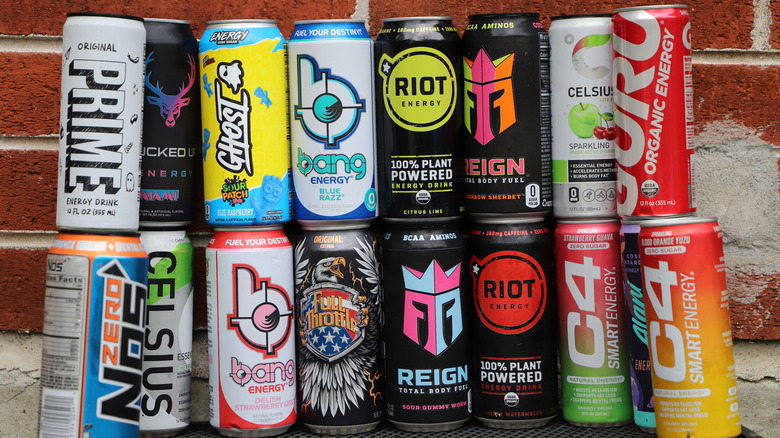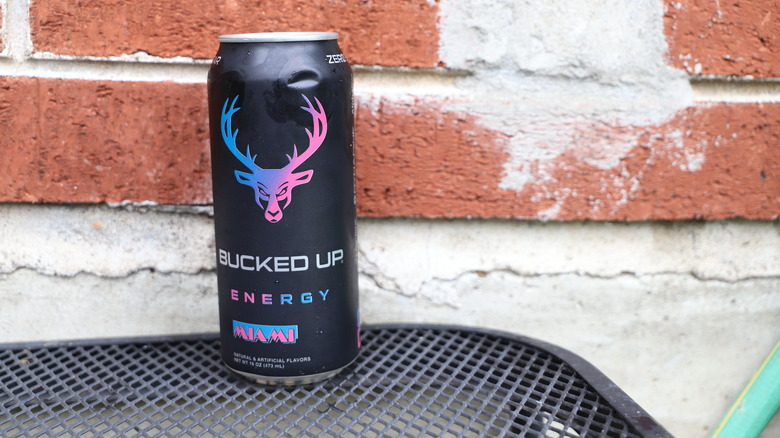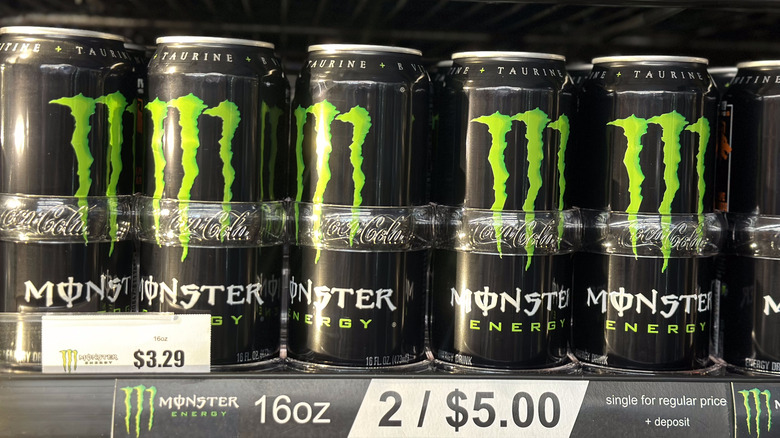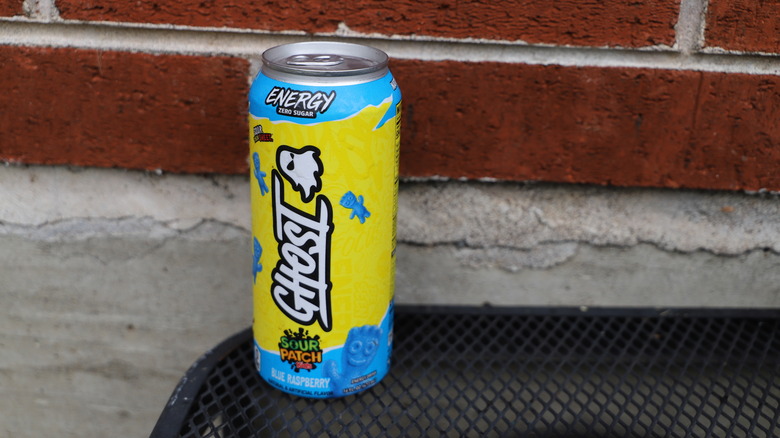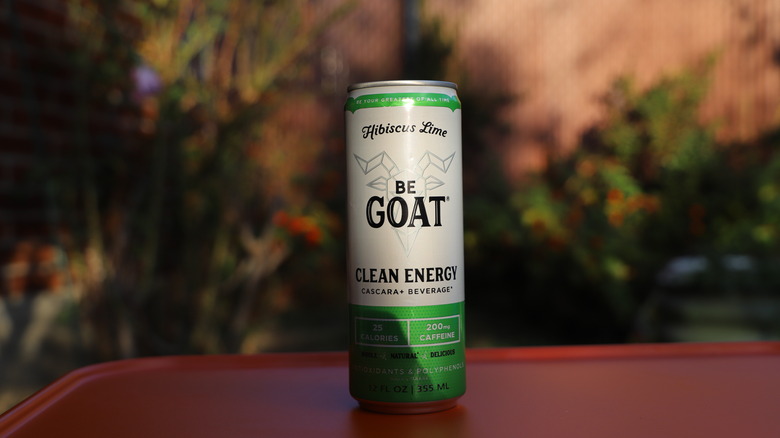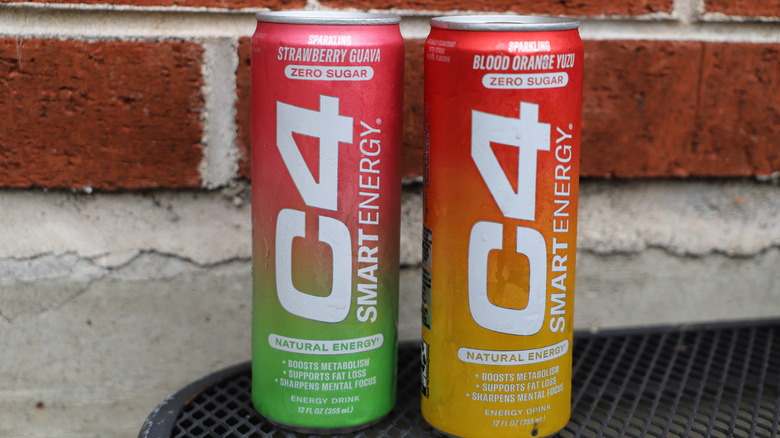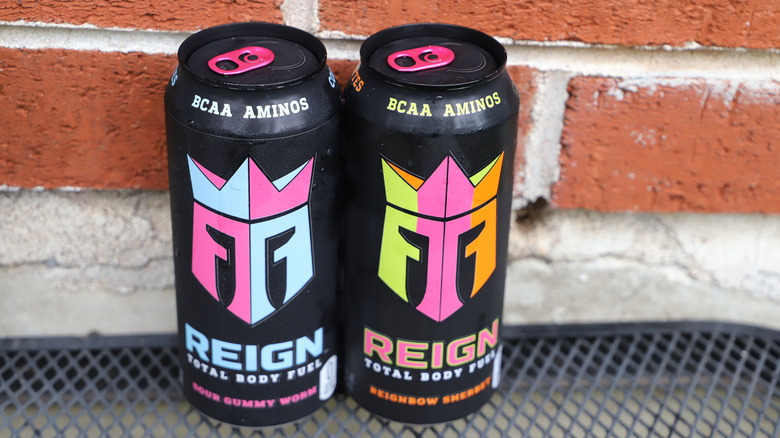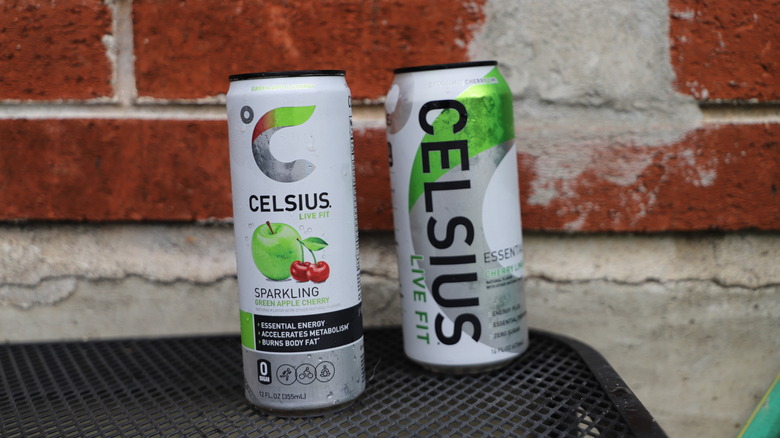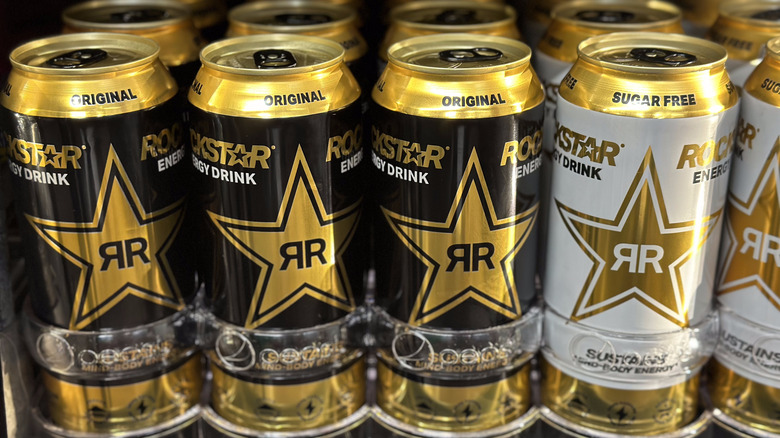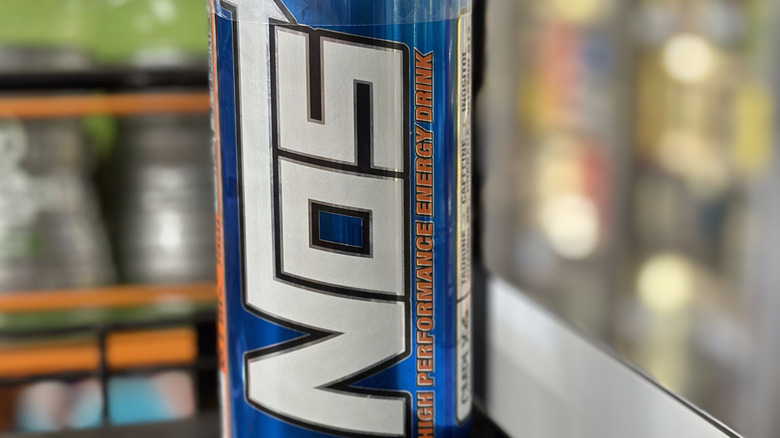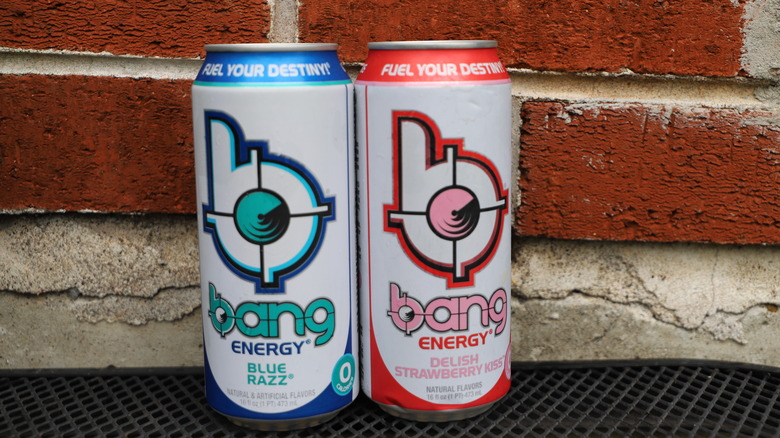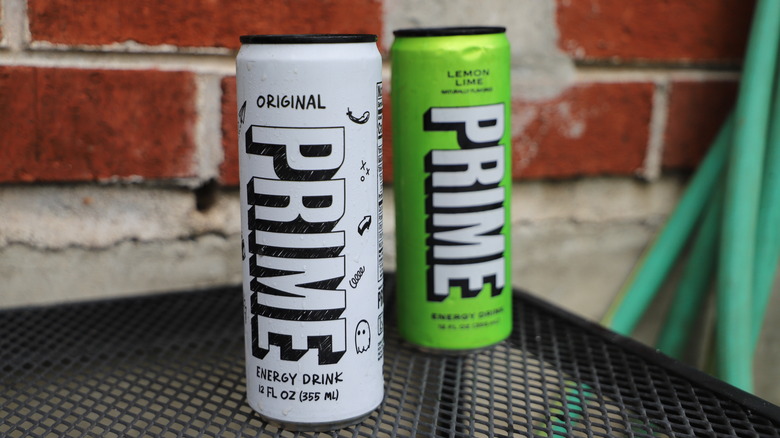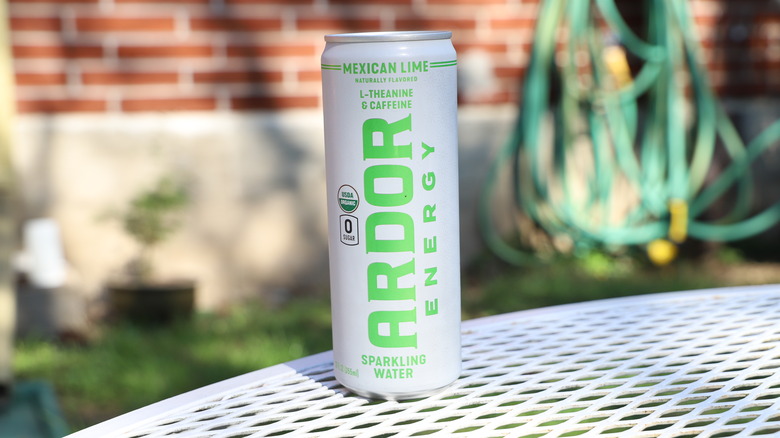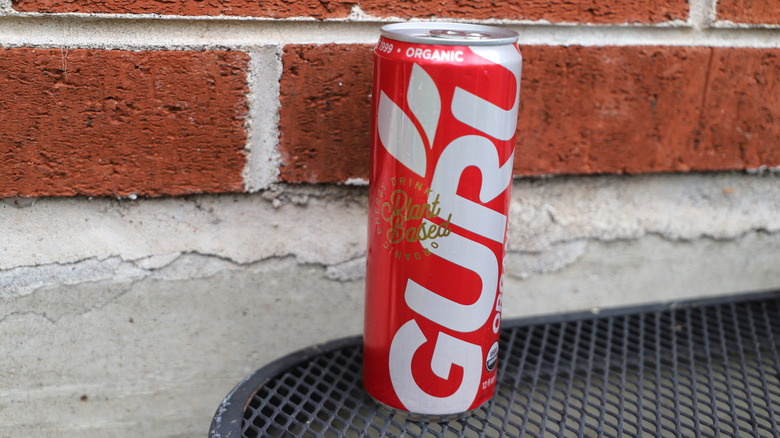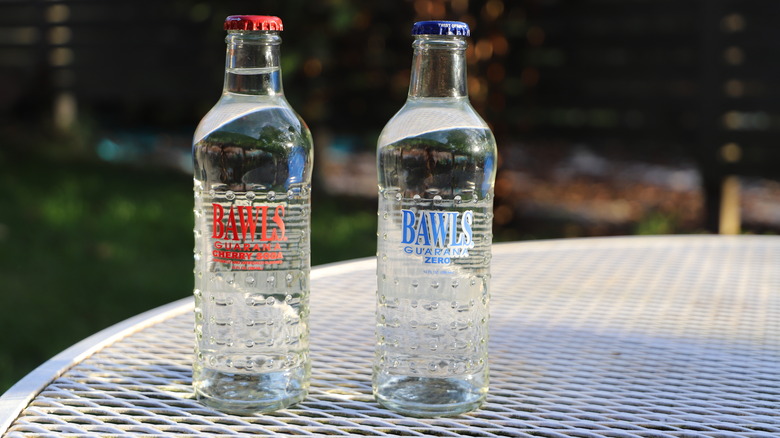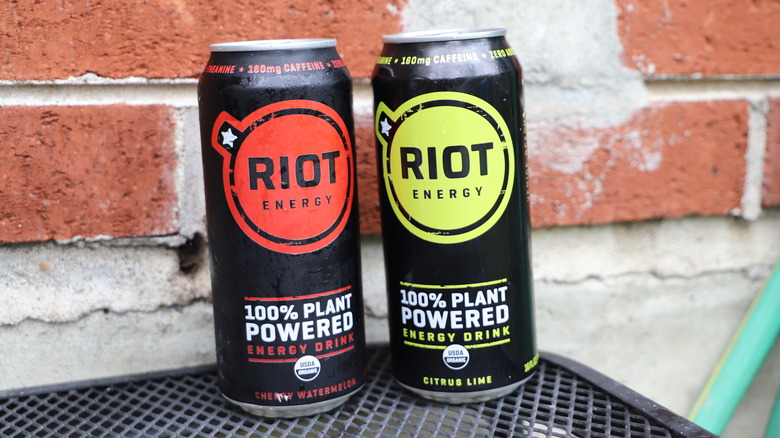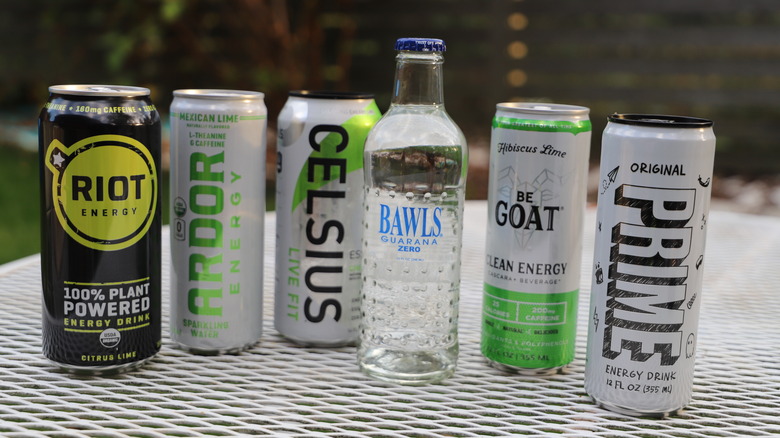15 Energy Drink Brands That Aren't Red Bull, Ranked
We may receive a commission on purchases made from links.
The energy drink market has exploded into a nearly $23-billion industry in the U.S. alone (via Grand View Research). The array of beverages on the shelves of modern-day grocery and convenience store shelves indicates the sheer size and popularity of energy drinks. These stimulating beverages, which have now stretched into entire cooler cases, show no signs of loosening their grip on American consumers. However, the landscape, cans, and even ingredients have undergone a considerable glow-up since their dawn. Red Bull and its ever-expanding family of flavors remains the industry standard despite encroaching competition from other brands.
For years, I've considered myself a closeted energy drink enthusiast, but I recently went public with my love of carbonated, pep-inducing drinks. But finding, let alone ranking and reviewing, a handful of other energy drink brands that could rival Red Bull was a daunting task. I cracked open several different energy-laden beverages and ranked them primarily based on their flavor. Whenever possible, I reached for the brand's original offering, but used lemon-lime (my usual go-to) or anything under the citrus umbrella as a surrogate when possible.
15. Bucked Up
Bucked Up's hyper-virile-designed can features a possessed-looking stag staring intimidatingly back at you. This brand doesn't offer a flagship flavor, and it seems like its team felt liberated to launch the most vaporous flavor ideas possible, including Blood Raz, Rocket Pop, and Miami.
Out of morbid curiosity and the awareness that citrus at least grows in Florida, I grabbed a can of Miami and hoped for the best. It was quease-inducing, malty like a cheap beer, and chalky like Smarties — which meant I had to put Bucked Up down after only a few paltry sips. Where I hoped to locate citrus tones, I met a cacophony of rotting coconut and decaying pineapple, all smothered by artificial sugars and carbonation. Bucked Up's Miami attempts to imitate a piña colada — but the result tastes more like a dive bar's dump bucket.
14. Monster
I consider Monster, Rockstar, and Red Bull contemporaries and the founding fathers of the energy drink canon. The trio forged the landscape of the cooler aisle I shop today, and if there ever was a Mount Rushmore commemorating the early days of energy drinks, I'd expect to see long cans of their likeness chiseled into a mountainside.
That said, the early days of energy drinks were not without their atrocities, crimes, and poorly-aged artifacts. Monster might be the most embarrassing war crime I've encountered in the line of battle. Monster somehow tastes like a burp of itself, not unlike the defunct energy-drink-malt-alcohol hybrid, Sparks. Its musky, yet indistinct, and masks the flavors of its energy-giving components. Perhaps due to its relative antiquity, Monster, like children's medicine, strains to appeal so much so it reads more like counterfeit sweetness and saline.
The drink is coded for kids craving a level-up from Surge or the many flavors of Mtn Dew. But, it's beyond the reach of even the highest dose of taurine. Acrid, unwelcoming, and indistinct beyond its unpleasantness, Monster, like fedoras and dresses-over-jeans, should be a relic of its era.
13. Ghost
The first time I spotted a Ghost energy drink, I did a double take. It's a bright yellow can, evocative of a color block battery, with a label that depicts a demonic, mouthless ghost mascot. The brand also features startling collabs — I'm looking at you Sour Patch Kids, Welch's Grape, Swedish Fish, and Warheads. Clearly, Ghost aspires to be the gateway energy drink of Generation Alpha.
Ghost could be included in a starter pack alongside a Nintendo Switch, a pack of Nerds Gummy Clusters, and a subscription to YouTube Kids. Both the Sour Patch Kids blue raspberry and cherry limeade flavors I sampled fell far below the bar that Red Bull set as standard. Both drinks tasted only like generic candy — which was closer to the mystery flavor of a Dum-Dum lollipop than their respective aim. The Sour Patch Kids flavor missed the candy's signature citric acid zing, while the cherry limeade leaned too heavily into dense cherry. Both beverages left me yearning for yet another beverage just to wash away Ghost's hauntings.
12. BeGOAT
BeGOAT, one of the energy drinks you'll have to hunt for in an upscale or organic grocery store, considers itself a "clean" alternative to other energy drink brands. One 12-ounce can contains 200 milligrams of caffeine derived from cascara. Besides this, it also contains antioxidants, polyphenols, and a healthy dose of stevia for sweetness.
Unfortunately, the stevia, the not-so-secret ingredient keeping BeGOAT's drinks under 40 calories, has an unpleasant flavor that distracts from the rest of the beverage. I had to search for the floral flavors in the hibiscus lime beverage that I sampled. While this process distracted from the stevia's sting, it made this energy drink brand one that I would not want to try again — especially when the caffeine content is lower than other brands that I sampled.
11. C4
C4, one of a handful of energy drink brands aimed at gym rats, launched in 2011. It now also offers beverage powders, fat burners, and even testosterone boosters which, along with its intense brand narrative, has always steered me away from it. Despite its athletic branding, C4 incongruously offers a kaleidoscope of flavors fit more for a middle schooler than an Olympian.
The C4 catalog consists largely of collaborations between candy and treat brands, like Jolly Rancher, Skittles, and Popsicle, but its proprietary flavors include thoughtful, unique options like the blood orange yuzu I sampled for this ranking.https://www.amazon.com/s?k=C4+... I was excited for the inclusion of yuzu and eagerly snapped open the can with a heart full of excitement. But, I barely found any tart notes present. C4's reading of yuzu, a lemon-adjacent citrus, overplays its sweetness. Instead of being biting and sour, the drink tasted slightly tropical and foul. If I was blindfolded, I would have never guessed that this blood orange yuzu flavor was supposed to be paired with the citrus. I suspect only the sweaty runoff from a customer's lips could gift the drink balance.
10. Reign Total Body Fuel
After deep-probing the energy drink aisles, the cans start to blend and suggest a silent, but all-caps, game of one-upmanship between seemingly interchangeable products. An enormous subsect of this new era of energy drinks attempts to convey both toughness and fun and seems to reach two distinct customer bases: youths cramming for a test and middle-aged desk workers who yearn for the carefree, candy-addled days of their childhood.
Reign is no different. Like C4, it conjoins jock imagery with mind-boggling flavor offerings, such as sour gummy worm, white gummy bear, rainbow sherbet, and red dragon. I snatched a rainbow sherbet can hoping the sherbet notes would provide a fruity lift. It was too sweet, but undeniably tasty — and it made me want to cut it with a generous pour of Topo Chico to dilute its potency. Although this beverage was overwhelmingly sugar-ladened, I was surprised and impressed that it could dial in a flavor as complicated as sherbet. However, the drink made me hyper, which led straight to fatigue. By the time I finished sipping it, I was in need of a nap.
9. Celsius
Celsius offers a generic can, too many flavors to recount, and a low-calorie catalog. In the 20 years since it's been released, it's been celebrated as a wellness-coated product aimed at a more feminine audience — which is an approach that not many other beverages in its cohort have chosen. Its can even boasts health claims — which include accelerating the metabolism and burning the body fat of its consumers. Celsius, despite its nondescript can, holds its own amongst the drinks with more braggadocio.
Though Celsius' flavors tend to blur together, I think of green apple cherry as the valedictorian of its class. It distinct tart green apple notes tickled my taste buds, while it also offered a smacking, Granny Smith apple-flavor that I would return to. Though, Celsius' agreeability lives and dies on cracking and finishing the beverage ice cold; it needs to be served right out of the refrigerator so the liquid glides swiftly down the center of the tongue while keeping the off-putting smack of artificial sugars at bay.
8. Rockstar
Rockstar is the brand I've historically blamed for giving energy drinks a bad rap. For no substantiated reason, I've mean-mugged Rockstar's dated aesthetic as a turn-off to an afternoon energy bump.
The odor of Rockstar's original beverage hit me before I could taste it; it had a thick aroma of tropical fruit and bubblegum, both of which remained once the liquid hit my tongue. Admittedly, I'd prefer a tropical-inspired beverage with sharp, acidic tones like passion fruit and pineapple. Instead, Rockstar veers into over-ripe guava and lychee. However, Rockstar's portrayal of sweetness, though intense, is pleasant, and the drink itself offers a noticeable personality.
Although it's not as putrid as I thought it would be, I hold firm that Rockstar is similar to black nail polish. It's an alternative product that I, although I don't partake in it, can admire and appreciate. After all, every culture deserves its own energy drink.
7. Nos
What do Eva Mendes, Devon Aoki, Kurt Russell, and Nos all have in common? They're all scraps from the "Fast and the Furious" franchise. Perhaps Nos was Brian O'Conner's beverage of choice, but I suspect the growing prestige circling the film franchise led to its signature drink taking the back seat. Nos shares a lot in common with the series' early films — dated looks, lingo, and novelties included.
Nos is not for the faint of heart, but its exactly what it promises: a beverage with a flavor that crashes on the tongue with sharp passion fruit, pineapple, and mango undertones. If Nos was more subdued, it could probably be associated with things other than the thrill-seeking cast of the "Fast and Furious" films. It's a tad too aggressive for an everyday sipper, but I'd still crack a can of Nos when I'm looking for a cheap thrill.
6. Bang
Just like every other lifestyle consumer good, it's hard not to judge a book by its cover — or in Bang's case, by its bull's-eye themed can. With a name like Bang, baggage follows, and the target-evoking illustration on the chunky 16-ounce can's center further led me to assume the worst about Bang.
Bang, like the many second-generation energy drinks, exists without a signature flavor. Though, the entirety of Bang's roster contains zero calories, while its flavors are more evocative of a Kesha-themed nightclub than any armory I've seen. I cracked open cans of Blue Razz and Delish Strawberry Kiss because they were some of the only flavors I could wrap my head around (unlike Rainbow Unicorn or Star Blast). I was pleasantly satiated by the airy, perfectly carbonated, and nostalgic fizz. Both flavors portrayed their assigned profiles with gusto — they were candy-like but not crushingly so. They both called to mind Laffy Taffy flavors without the icky-sticky notes. Although they're in no way everyday energy drinks, the two flavors don't disappoint. But, they still feel like beverages that should be shared with two straws, milkshake-style, as opposed to crushed solo.
5. Prime
I'm disgraced to admit, for the sake of journalism, that I like Prime — an energy drink founded by Logan Paul. Like a Hinge date I pretended to go on as a goof, I fell for the bro-ey appeal of the block-letter-adorned can almost immediately.
The original flavor is somewhat nondescript, it's solely sweet without any distinguishing attributes. I did pick up on a distracting note near the end of a sip that oddly (but not unpleasantly) reminded me of lemon pepper. I was intrigued enough to taste Prime's other fruit offerings, like lemon-lime and strawberry watermelon. I can confidently say that Prime shines brightest in its citrus category. Though, I felt a tinge of shame every time I raised the can's mouth to my own. I felt like a middle-aged but once-relevant celebrity that was attempting to keep up with a younger generation — and felt more irrelevant than ever when I imbibed in the potion of the iPad baby generation.
4. Ardor
Ardor attempted to replace the 16-ounce hole that the discontinuation of HiBall energy left in drinkers' hearts. Ardor picks up the defunct drink's baton and makes a valiant attempt to claim the throne HiBall occupied for over 15 years. The brand smartly shies away from bombastic flavors so many energy drink brands have relied on. Instead, it favors a delicate touch, reminiscent of the essences of La Croix's sparkling waters.
With offerings such as Mexican lime, cucumber mint, and vanilla blackberry, Ardor courts a demure energy drink enthusiast bent on staying above the fray. The secret ingredient of sea salt sets Ardor pushes Ardor above the pack by creating an airy, light, even, and slightly-savory edge that resonates as quaffable and mellows any of the energizing ingredients. The Mexican lime flavor I sampled lacks any notes that point to a specific species of lime, but the beverage does succeed in offering a pithy, zesty note instead of an artificial tartness.
3. Guru
Guru, an energy drink first released in 1999, has come full circle. The brand, with its fire engine-red can and sans serif font, promised nothing but "plant-based energy," which was surely an attempt to sway customers away from wing-bestowing Red Bull to something more natural. Now, Guru fits just like a pair of vintage jeans I'm thrilled to see come back in style.
After trying so many cacophonous, syrupy liquids, Guru was truly a palate cleanser. It contains a modest, but not eyebrow-raising 115 calories per 12-ounce can. Guru's original flavor settles into Coca-Cola-like botanical notes — rather than an imitation of fruit or candy. On flavor alone, I wouldn't immediately clock Guru as an energy drink. Its flavor is more akin to a cola soda — which means you could even pair Guru with a meal. Its relative flatness never dissuaded me from taking another gulp. In short, Guru is a can I'd proudly hold in public, though it could use an extra jolt of carbonation.
2. Bawls
Bawls Energy is harder to come by now than it was a decade ago. It fell to the wayside as the new class of energy drinks ushered their way into the once-sparse market that Bawls used to occupy.
It was the only energy drink I sampled that was sold in a glass bottle. Bawls is immediately recognizable by its lapis-toned 10-ounce bottle adorned with symmetrical, cyst-like bumps surrounding its entire surface. From looks alone, I'd assume Bawls was a Zima-adjacent beverage. The late-joining flavors resembled the lightly boozy, malt beverage from a simpler time. Folks who enjoy drinking the Japanese lemon soda Ramune, or those who still yearn for the defunct Sprite Remix, will appreciate this beverage. Bawls offers an exotic, hazily tropical, citrus note with a crisp finish void of the syrupy smack of most energy drinks I see Gen-Z clutching today.
1. Riot
Though they say it's lonely at the top, I doubt that the adage holds when every single one of the flavors within your family of beverages hits (as the kids say). Sure, I enjoy a couple of Riot's cans more than the others (like citrus lime and strawberry lemonade), but I wouldn't kick any of Riot's 16-ounce vessels off the workstation or out of my cupholder.
Riot is a near-flawless compromise between the energy drinks of yore and the flashy, health-focused beverages of the current epoch. The brand smartly avoids announcing itself as an accouterment for any specific archetype. This is one of the only truly refreshing drinks on the market; it offers easily-readable, punchy, and acidic notes in each can. I love the citrus lime flavor, as it has a biting edge that's rarely found in other energy drinks on the market.
Methodology
I traversed the landscape of energy drinks to select products for this list. The products I selected could be found at convenience stores, conventional grocers, and boutique markets (such as Erehwon). After I purchased each product, I ranked them based on taste alone, but also consider each brand's history, intended audience, and available flavors.
To narrow down which energy drinks would be included on this list, I focused solely on products that relied on stimulants for caffeine, as well as those with naturally-occuring, but chemically isolated, ingredients like taurine, guarana, L-carnitine, B vitamins, and L-theanine. Therefore, tea-dominant drinks fueled by yerba mate, matcha, or green tea were omitted. The result was a list of energy drinks with varying caffeine contents, all comparable to Red Bull.
